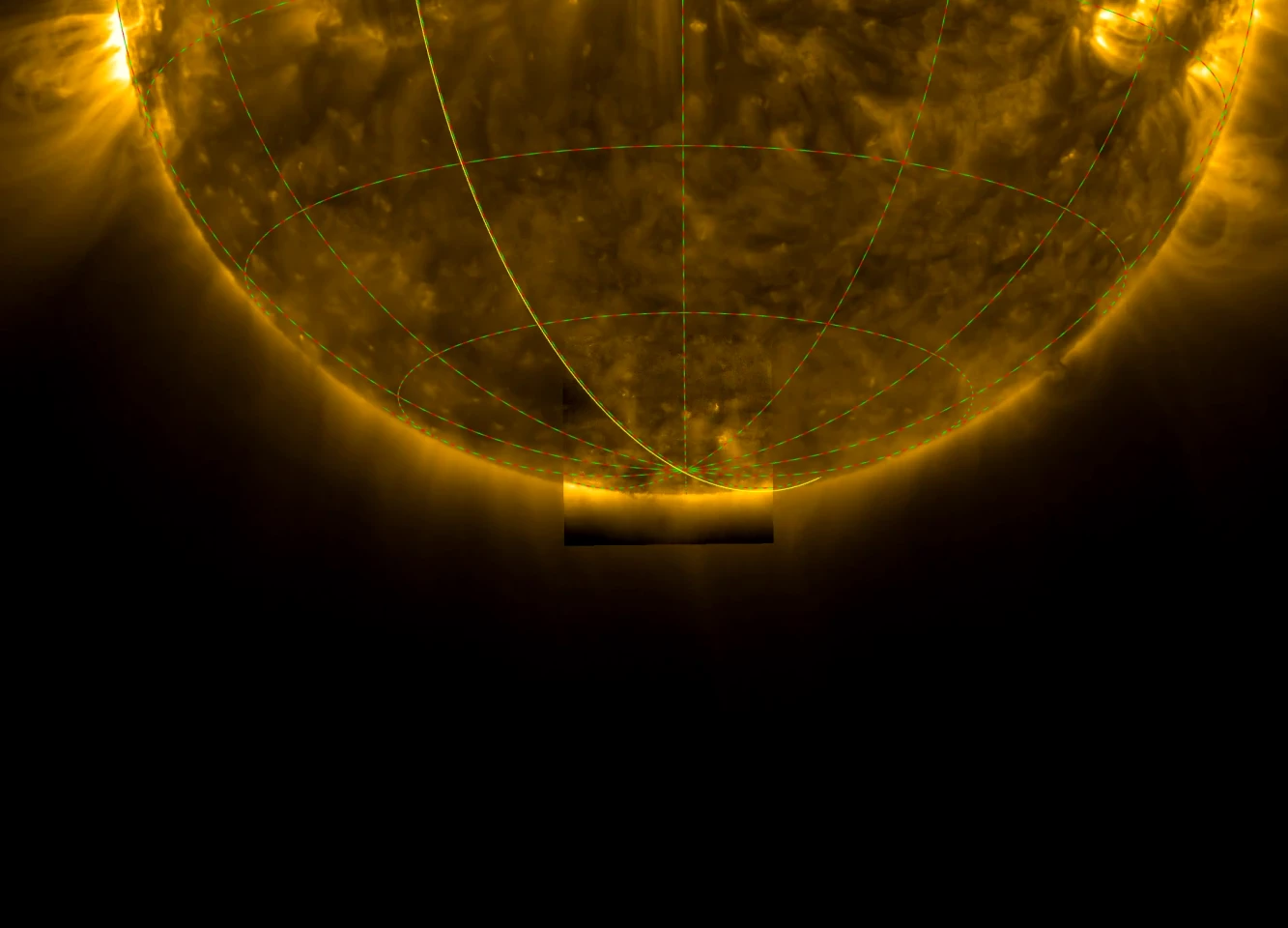[ad_1]
ESA’s Solar Orbiter deep-space probe has made history, returning the first-ever images of the Sun’s south pole. It’s a world first that sheds a great deal of light on the mysteries of our parent star, but it wasn’t easy to achieve. Very far from it.
Unless you take your winters well inside the Arctic or Antarctic circles or hang out in the sort of depressingly cloud-covered, rainy regions like the one I live in, you see the Sun almost every day, so you would think we’d know just about all there is to know about it.
In fact, the Sun is still one of the great unknowns of science. After almost 200 years of intensive study, we still understand very little of its variability, inner structure, the dynamics of its interior, the behavior of its titanic magnetic field, or even exactly how it is powered. At the end of the day, all scientists really have is a very large stack of hypotheses, and a far smaller collection of certainties.
Solar Orbiter zooms into the Sun’s south pole
In light of this, it isn’t surprising that until this year the south pole of the Sun was as inaccessible to us as the far side of the Moon once was. It was also about as hard to get a look at as it was to snap pictures of Pluto.
A joint mission by ESA and NASA, Solar Orbiter launched from Cape Canaveral Space Force Station atop a United Launch Alliance Atlas V 411 rocket on February 10, 2020. So why did it take five years to take its first images of the solar pole?
The answer is that the robotic Solar Orbiter not only had to get close to the Sun, which is hard enough, its mission parameters also required the spacecraft to head in a direction that very few have ever attempted. Until now, all of our studies of the Sun have been conducted by looking at its equator. This is because the planets all lie close to the ecliptic, which is the plane defined by the Earth’s orbit, and most spacecraft remain within about seven degrees of it. From such a vantage point, only the equator view is possible.

ESA/NASA/Solar Orbiter PHI Team/J. Hirzberger
Currently, Solar Orbiter is orbiting the Sun once every 168 days at a distance between 26 million and 85 million miles (42 million and 136 million km) and inclination to the ecliptic of 17° that will increase to 33° as the mission progresses.
To place it at such an angle requires an enormous change in the probe’s velocity – much greater than any rocket could achieve. This meant that Solar Orbiter has and is carrying out a series of flybys of Venus and Earth to give it the slingshot boosts it needs to send it towards the Sun and out of the ecliptic into a very lonely region of outer space.
Mind you, that’s a lot more complex than it sounds. Every flyby has to be done with extreme precision so the Solar Orbiter passes through exactly the right point in space at a precise point in time. Since these flybys have a cumulative effect, any error will simply compound over the years like my overdraft. This isn’t helped by the fact that as the craft approaches the Sun it’s subjected to temperatures as high as 500 °C (932 °F) and has to endure periodic communications blackouts with Mission Control in Darmstadt, Germany.

ESA/NASA/Solar Orbiter PHI Team/J. Hirzberger
Still, the space agencies seem to regard all this cosmic hullabaloo as worth the trouble. In addition to its cameras, Solar Orbiter has a suite of scientific instruments aboard, including an Energetic Particle Detector (EPD), Magnetometer (MAG), Radio and Plasma Waves (RPW) instrument, Solar Wind Analyser (SWA), Extreme Ultraviolet Imager (EUI), a solar coronagraph, Heliospheric Imager (SoloHI), Polarimetric and Helioseismic Imager (PHI), Spectral Imaging of the Coronal Environment (SPICE), and X-ray Spectrometer/Telescope (STIX).
All this kit isn’t just to satisfy scientific curiosity. The Sun not only makes life possible on Earth, it’s also the single greatest influence on our weather and climate and its 11-year activity cycle during which the Sun’s magnetic field flips can have a major impact on our everyday lives. One bad solar flare in our direction could wipe out a large fraction of the world’s power grid in short order, or, at the very least, disrupt all radio communication. Because the Sun’s magnetic field is especially unstable and dynamic near the solar poles, particularly the south pole, a good, hard look can pay dividends that will protect us here on Earth.
“Today we reveal humankind’s first-ever views of the Sun’s pole,” said Carole Mundell, ESA’s Director of Science. “The Sun is our nearest star, giver of life and potential disruptor of modern space and ground power systems, so it is imperative that we understand how it works and learn to predict its behavior. These new unique views from our Solar Orbiter mission are the beginning of a new era of solar science.”
Source: ESA
[ad_2]